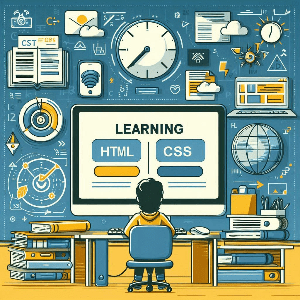CSS (Cascading Style Sheet) in Computer Science

Along with HTML, students at both key stages 3 and 4, learn the basics of styling the HTML using CSS in stylesheet to create beautiful markup websites, this includes:
CSS Fundamentals
Design Principles: Students learn fundamental design principles such as layout, balance, contrast, and alignment to create visually appealing and user-friendly web pages.
Styling Pages: HTML elements are styled using CSS (Cascading Style Sheets) to control their appearance, including attributes like color, font, size, and spacing.
Text Colors: CSS allows students to specify text colours using colour names, hexadecimal codes, RGB values, or HSL values, enabling customization of text appearance.
Background Colours: Background colours can be applied to HTML elements using CSS, enhancing the visual presentation of web pages and creating distinct visual elements.
Changing Fonts: Students can use CSS to specify font families, sizes, weights, and styles, providing flexibility in customizing the appearance of text content.
Alignment and Size: CSS properties like text-align and width enable students to align text and control the size of elements, ensuring proper layout and presentation.
Styling Hyperlinks: Hyperlinks can be styled using CSS to change their appearance, including color, font, decoration, and hover effects, improving user interaction and navigation.
Color Codes: Students learn to use colour codes, such as hexadecimal, RGB, and HSL values, to specify colours in CSS, allowing precise control over the colour palette of web pages.
External CSS: External CSS files can be linked to HTML documents, allowing for centralized styling and easier maintenance of styles across multiple web pages.
Navigation Bars: Navigation bars are created using HTML lists and styled with CSS to provide navigation links for users, facilitating easy access to different sections of a website.
Intermediate and Advanced CSS
Margins and Padding: CSS properties like margin and padding are used to create space around elements, controlling their positioning and appearance within a layout.
Advanced Positioning: Advanced positioning techniques, including absolute, relative, fixed, and sticky positioning, allow students to precisely position elements on a webpage, creating complex layouts and designs.
